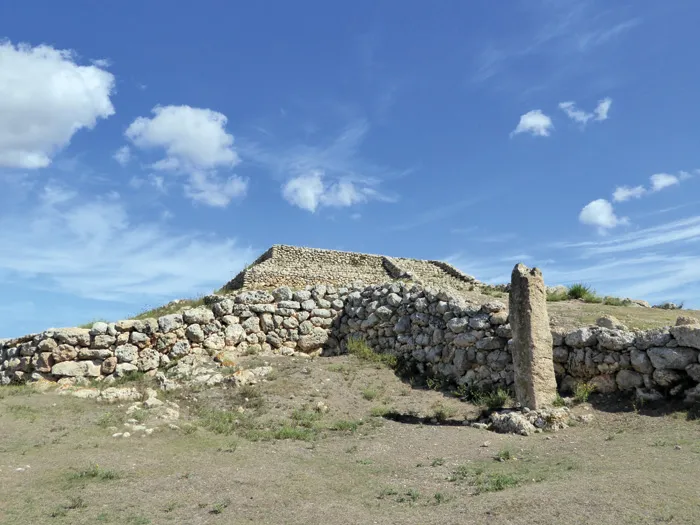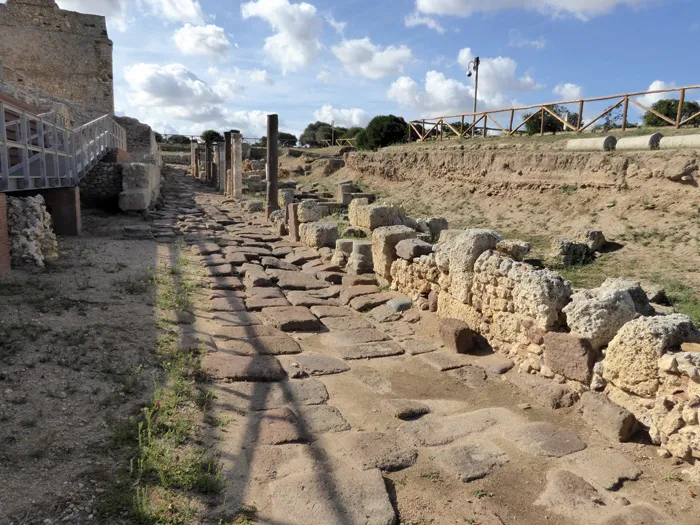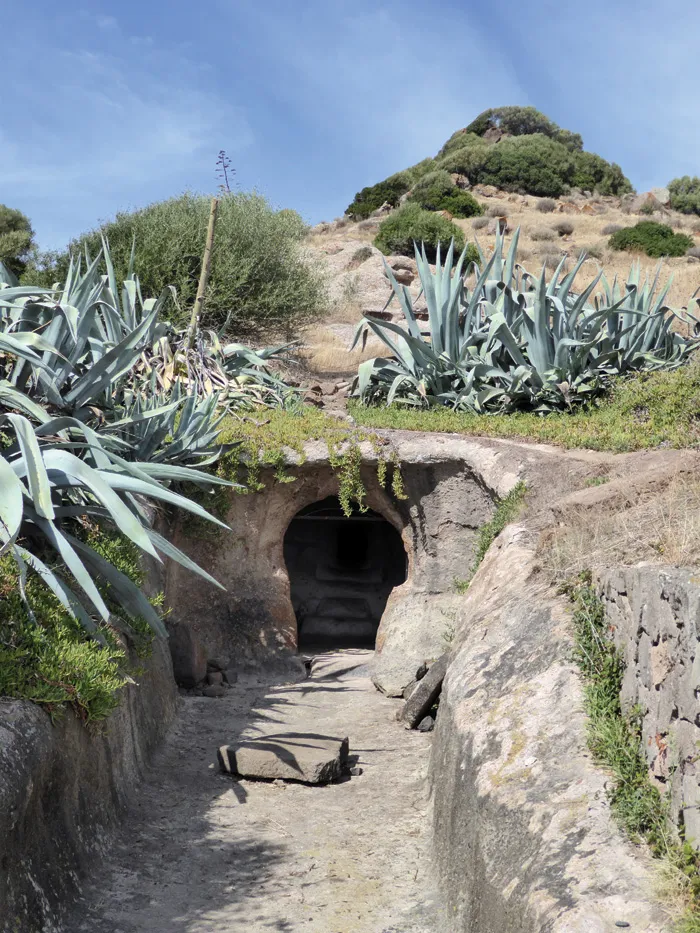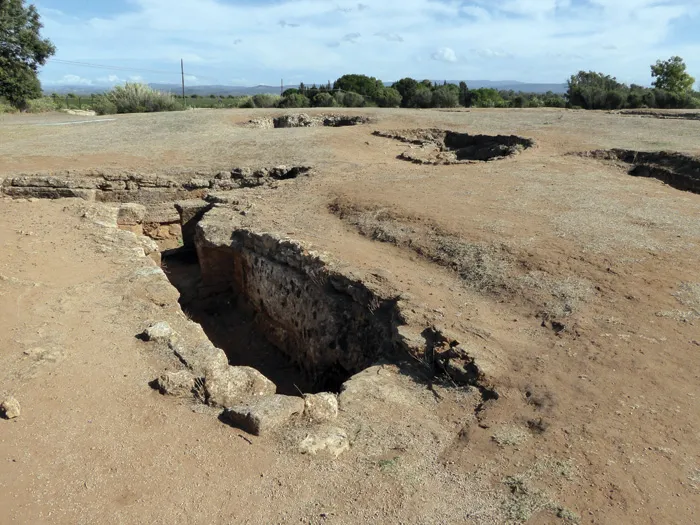Sardinia is a treasure trove of ancient history, where sacred pyramids rise from plains, Roman towns rest along serene coasts, and rock-cut tombs honor the dead in mystical designs. Journey through time as we explore the extraordinary sites of Monte d’Accoddi, Turris Libisonis, and the Neolithic necropoleis near Alghero.
ALSO READ: Reassessing the ‘Lion Man’: God, Shaman, or Simply a Bear?
Monte d’Accoddi: Sardinia’s Prehistoric Ziggurat
A Sacred Structure on the Plains
Amid the flat green plains of north-west Sardinia, Monte d’Accoddi rises dramatically against the sky. Its stepped, truncated pyramid and long access ramp draw comparisons to the Mesopotamian ziggurats, although no historical link exists. The site’s elevation may have symbolized a meeting point between earth and the heavens—an idea shared with Near Eastern cultures.

Origins and Construction Phases
Monte d’Accoddi has deep roots in the Ozieri culture (3500–2900 BC) and remained in use until about 1800 BC. Originally mistaken for a Bronze Age nuraghe, the mound was later revealed to be a temple-altar through excavations by Ercole Contu in 1952. A granite stele featuring a female deity was also discovered here—today preserved in the Museo Sanna in Sassari.
Ritual Structures and Ceremonial Use
The site evolved through two main phases:
-
Phase 1 (c. 3000–2800 BC): Construction of a rectangular ochre-painted sanctuary, known as the Red Temple.
-
Phase 2 (c. 2700 BC): Transformation into a terraced pyramid by the Abealzu-Filigosa culture, complete with a 40-meter-long ramp and sacrificial evidence of cattle, pigs, and sheep.
Ritual objects, stone altars, menhirs, and large egg-shaped stones scattered around the site indicate an intense ceremonial focus.
Roman Splendor at Turris Libisonis (Porto Torres)
A Coastal Hub of Trade and Culture
Just a short drive from Monte d’Accoddi lies Turris Libisonis, a Roman town built along the coast at Porto Torres. Located in the Gulf of Asinara, the town enjoyed protection from strong winds and easy access to maritime trade routes.

Rise of a Roman Colonia
Founded in the 1st century BC as Colonia Iulia Turris Libisonis, the settlement flourished in the Roman Imperial era, becoming Sardinia’s second most important town after Caralis (modern Cagliari).
Highlights of the Ancient Town
Though partly disrupted by 19th-century railway development, visitors can explore:
-
Roman bathhouses (3rd–4th century AD)
-
Street-side tabernae
-
The Domus of Orpheus, a richly decorated Roman house
Mosaic Masterpieces
Inside the Domus of Orpheus, mosaics reveal scenes of myth and daily life:
-
Orpheus playing the lyre, surrounded by animals
-
A mythological wedding mosaic
-
A beautifully detailed sea-life mosaic, depicting tuna, eels, sole, crabs, mussels, and more, lining a water feature
Ongoing restoration of frescoes continues to shed light on this ancient Roman home.

Neolithic Tombs: Houses for the Dead
Santu Pedru Necropolis: Tombs Beneath the Rock
Near Alghero’s airport, the Santu Pedru necropolis contains ten Late Neolithic tombs, carved into a rocky hill capped by a collapsed nuraghe. One tomb was even reused as a church in the 6th–7th centuries AD.
Excavations and Burial Customs
Discovered in 1959, the Tomba dei Vasi Tetrapodi revealed ceramics, shells, and metal artifacts spanning from 3000 to 1500 BC. False doors, ochre-painted walls, and carved bull’s horns reflect the spiritual beliefs surrounding death.
Anghelu Ruju Necropolis: A Vast Prehistoric Cemetery
Just minutes away, the Anghelu Ruju necropolis boasts 38 rock-cut tombs, used across millennia. Look for:
-
Carved offering bowls in stone steps
-
Symbols like bull’s horns, false windows, and pillars
-
Architectural elements mimicking domestic dwellings, symbolizing homes for the dead
These “houses of the fairies” (domus de janas) show how Sardinian people sought to honor their ancestors with reverence and care.

Conclusion: A Journey Through Sardinian Time
From the prehistoric monument of Monte d’Accoddi, echoing divine aspirations, to the bustling Roman life of Turris Libisonis, and the peaceful tombs carved for the dead, Sardinia offers a unique blend of ritual, myth, and memory. This island’s rich archaeological legacy invites us to walk with its ancient people—and understand their world through the monuments they left behind.


